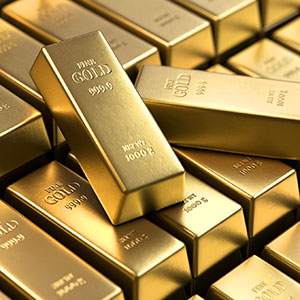
On Friday, the spot price of gold crossed the psychologically important $1,900-an-ounce barrier for the first time since 2011, putting the metal close to its all-time record high.
At the time of publication, gold was trading at $1,902 an ounce, having hit $1,905 an ounce earlier in the day.
The news comes less than three weeks after the yellow metal crossed another important benchmark: $1,800 an ounce.
Analysts are now betting that it could soon top its all-time record price—$1,923, which it hit in 2011—and eventually cross the long-predicted $2,000-an-ounce barrier.
George Gero, managing director at RBC Wealth Management, calls the gold price “a barometer of economic and global well-being.”
He tells JCK that the metal’s current rise has been fueled by low interest rates, the weak U.S. dollar, and the steady drumbeat of negative headlines, including “escalating U.S.-China tensions, U.S. election headlines, unrest in U.S. cities, but mostly pandemic headlines. Everywhere the investor looks, he sees global worries.”
He thinks that $2,000 an ounce will probably be hit soon, though the price might fall next week due to some sell-off activity. But overall, Gero says, gold has “all the technicals that traders like, like higher open interest, higher volume, higher moving averages.”
The yellow metal was trading at $1,524 in January, which means it has risen around 25% since the beginning of the year.
At the same time, silver has also had a good 2020, with prices up about 25% since January. At the time of publication, it was trading at $22.89, its highest level in seven years.
“Silver, which is poor man’s gold, has now graduated to keeping pace with gold,” says Gero.
Somewhat lagging behind is platinum—which has traditionally cost more than gold, but has stayed relatively flat this year, mostly due to lower industrial demand. At the time of publication, platinum was trading at $919 an ounce.
(Photo: Getty Images)
- Subscribe to the JCK News Daily
- Subscribe to the JCK Special Report
- Follow JCK on Instagram: @jckmagazine
- Follow JCK on X: @jckmagazine
- Follow JCK on Facebook: @jckmagazine